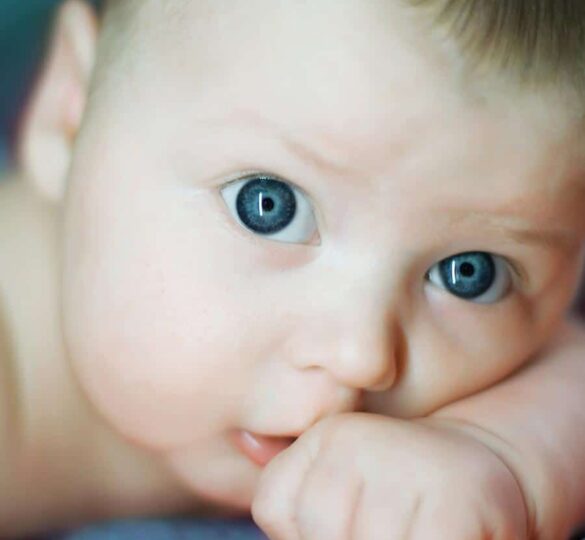Glaucoma Can Strike At All Ages, Even Newborn Babies
Primary congenital glaucoma is the most common hereditary childhood glaucoma and an important cause of childhood blindness.

Over 3 million Americans have glaucoma. And this is a cause of blindness that does not just affect older age groups. Glaucoma can strike even newborn infants.
Childhood glaucoma occurs in 1 out of every 8,000 children in the United States. Primary congenital glaucoma (PCG) accounts for approximately 50% to 70% of all cases of childhood glaucoma.
Diagnosing Glaucoma in Children
In most cases, primary congenital glaucoma is diagnosed within the child’s first year. Although uncommon, newborn primary congenital glaucoma is an important subtype of primary congenital glaucoma, notable because it is often the most severe and clinically challenging expression of this disease.
Babies born with newborn glaucoma typically manifest specific signs that help doctors to diagnose it at birth — signs which also become important in the assessment and determination of appropriate treatment.
Primary congenital glaucoma is the most common hereditary childhood glaucoma and an important cause of childhood blindness. For babies born with glaucoma, as well as infants who develop glaucoma, there are many significant challenges facing the child, the parents, the siblings, and health professionals caring for the child.
Treatment Methods
Both medical and surgical methods are used in treating childhood glaucoma. Medical treatments can come in the form of eye drops, pills, or suspension of medication for administration by mouth.
These treatments help to either increase the exit of fluid from the eye or decrease the internal ocular production of fluid. Both approaches result in a lowering the eye pressure. Surgical procedures that are used to help control eye pressure include goniosurgery, filtration surgery, glaucoma implant surgery, and laser surgery.
It is sometimes necessary to repeat glaucoma surgery in order to successfully control eye pressure. This can be difficult for the child and discouraging for parents. It is important that the child’s physical and emotional needs are considered by both the parents and the health care team.
What is Childhood Glaucoma?
Glaucoma refers to a group of eye diseases with common features that may include elevated eye pressure, damage to the optic nerve, and potential vision loss. There are many causes of adult and childhood glaucoma.
Quite simply, childhood glaucoma refers to the presence of glaucoma in a child. Congenital glaucoma is the common term used for glaucoma when diagnosed in infancy or early childhood.
Childhood glaucoma is associated with physical changes in the eye that are caused by the high pressure. Enlargement of the eye, cloudiness of the cornea, and injury to the optic nerve are examples of changes that can occur as a result of glaucoma.
There are many possible mechanisms for the drainage problem that results in childhood glaucoma. In each case, abnormal fluid drainage from the eye is the result of a blocked or defective trabecular meshwork drainage system.
The increased fluid pressure can push on the optic nerve and cause cupping (an abnormal enlargement in the optic disc area, which is the junction between the eye and the optic nerve). If the pressure remains too high for too long, the optic nerve fibers are permanently damaged.
Article by David S. Walton, MD. Last reviewed on March 9, 2022.

David S. Walton, MD
David S. Walton, MD is Clinical Professor of Ophthalmology at Harvard Medical School. Dr. Walton is in private practice specializing in pediatric ophthalmology in Massachusetts. He is internationally recognized for his expertise in treating childhood glaucoma.